If you’re a fan of flan, you’ll love this coconut-flavored custard from Sri Lanka. Instead of using cream and sugar, whisk together coconut milk and kithul jaggery. Incorporate eggs, cardamom, and nutmeg to make a decadent custard that you can cook in a variety of ways. For a traditional cooking method, pour the custard into ramekins and bake them in a water bath. If you prefer, bake them in a pressure cooker or even the microwave.
Ingredients4 whole eggs2 egg yolks1 3/4 cups (226 g) of kitul jaggery, grated1⁄8 cup (30 ml) of hot water from the tap3 to 4 cardamom pod seeds, crushed¼ teaspoon (0.5 g) of ground nutmeg2 cups (470 ml) of full-fat coconut milk1 pinch of salt
Makes 8 1⁄2 cup (120 ml) servings
StepsMethod 1Method 1 of 3:Mixing the Custard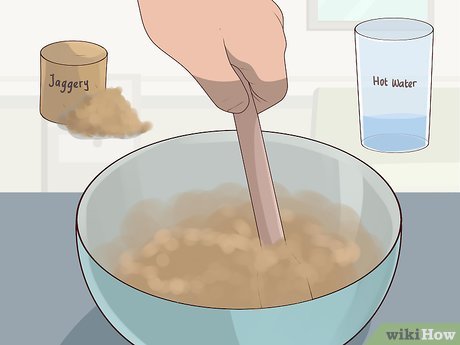
1Stir the hot water with the jaggery until it’s smooth. Put 1 3/4 cups (226 g) of grated kitul jaggery into a large bowl and pour in 1⁄8 cup (30 ml) of hot water from the tap. Break up any lumps of jaggery as you stir to create a thick paste.XThe jaggery won’t dissolve completely at this point.
Tip: If you can’t find kitul jaggery, you can substitute dark brown sugar. Try to use an unrefined brown sugar so you get a similar rich flavor.
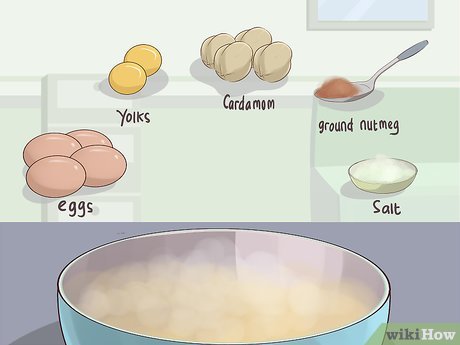
2Add the eggs, yolks, spices, and salt. Crack 4 whole eggs into the bowl with the jaggery paste and add 2 egg yolks. Then crush 3 to 4 cardamom pod seeds and add them along with ¼ teaspoon (0.5 g) of ground nutmeg and a pinch of salt.Save the 2 egg whites for a different recipe or discard them.If you’d like to use ground cardamom instead of crushing it yourself, use 1/4 teaspoon (0.5 g).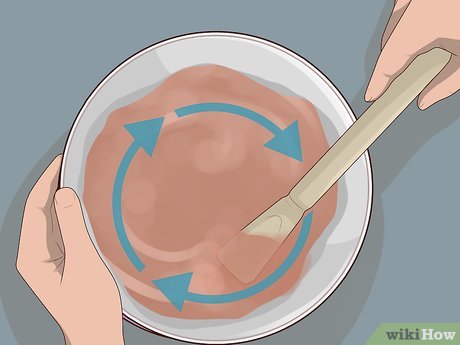
3Whisk the custard mixture until it’s combined. Whisk the ingredients in the bowl until they’re incorporated with the jaggery. Ensure that you whisk gently so you don’t make the eggs in the custard become frothy.XThe mixture should be thick, but smooth at this point.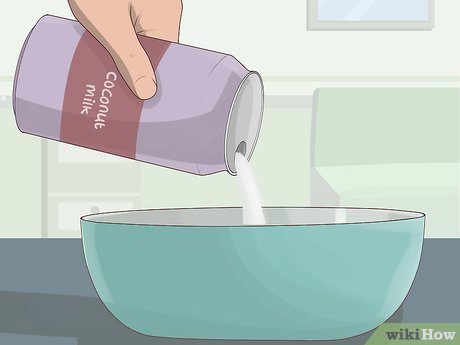
4Mix in the coconut milk. Open a can of full-fat coconut milk and pour 2 cups (470 ml) of it into the bowl with the jaggery mixture. Whisk well so the coconut milk combines and you have a smooth custard.XIf your can of coconut milk has been stored someplace cold, the coconut milk may have hardened. If so, scoop it into a microwave-safe dish and heat it until you can stir the coconut milk and dissolve any lumps.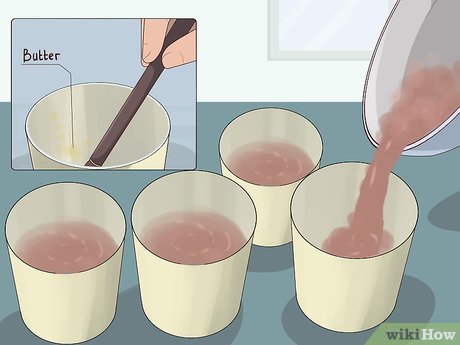
5Pour the custard into greased ramekins. Get out 8 ramekins that will hold 1⁄2 cup (120 ml) of liquid. Rub a little oil or butter inside each ramekin to prevent the custard from sticking. Then pour the custard into each ramekin so they’re evenly divided.XEnsure that you’re using heat-proof ramekins.Method 2Method 2 of 3:Baking in a Water Bath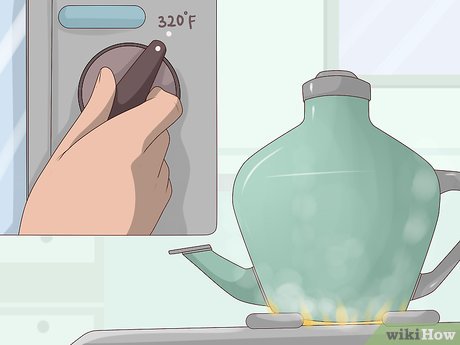
1Preheat the oven to 320 °F (160 °C) and heat a kettle of water. Fill a kettle with water and heat it until the water begins to boil. You’ll also need to get out a roasting pan or baking dish that’s large enough to hold all of the ramekins.XThe size of roasting pan or baking dish will depend on the size of your ramekins.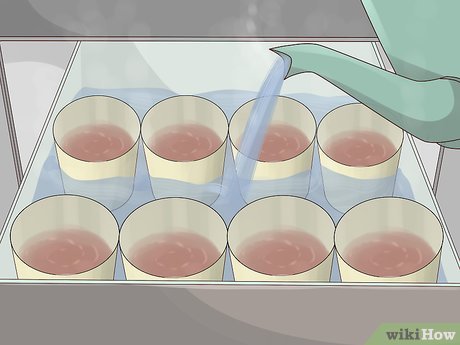
2Put the ramekins and hot water into the pan. Set the filled ramekins into the roasting pan or baking dish. Transfer the pan to the preheated oven and then carefully pour hot water from the kettle directly into the pan. Keep pouring until the water comes halfway up the sides of the ramekins.XEnsure that you don’t splash water into the ramekins as you pour.
Did You Know? A water bath (bain marie) will cook the custards gently and evenly so they don’t crack on top.
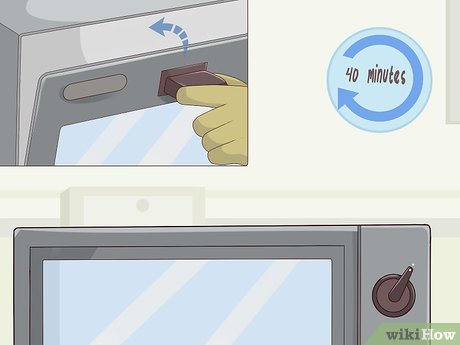
3Bake the watalappan for 30 to 40 minutes. Close the oven door and cook the custards until they’re set along the sides. To check if they’re finished baking, gently move the pan a little. The watalappan should wobble just a little in the center.XIf the custards slosh around in the ramekins and look like they’re still liquid in the center, bake them for a few more minutes and check again.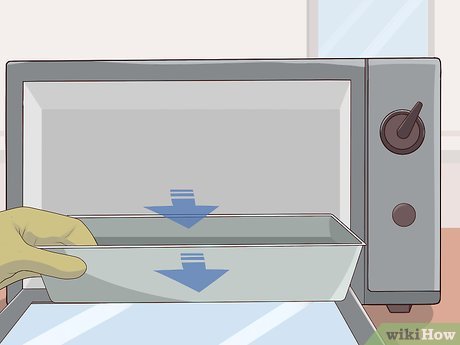
4Remove the pan from the oven and cool the watalappan for 15 minutes. Turn off the oven and carefully lift the roasting pan with the ramekins out. Set the pan on the stove or a sturdy wire rack and leave the custards to cool in the water bath.XLeaving the ramekins in the water bath to cool a little will prevent them from cracking due to temperature changes.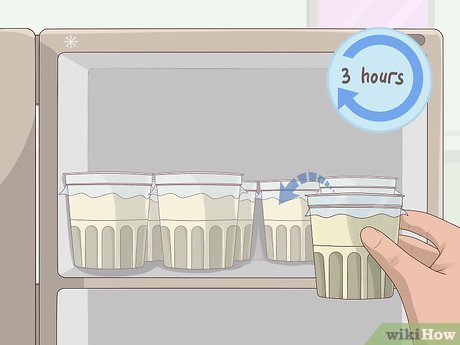
5Lift out the ramekins and refrigerate the watalappan for at least 3 hours. Once the ramekins are cool enough to handle, take them out of the water bath and cover them tightly with plastic wrap. Put them in the refrigerator to chill for at least 3 hours before serving.XYou can refrigerate the covered watalappan for up to 5 days.Method 3Method 3 of 3:Microwaving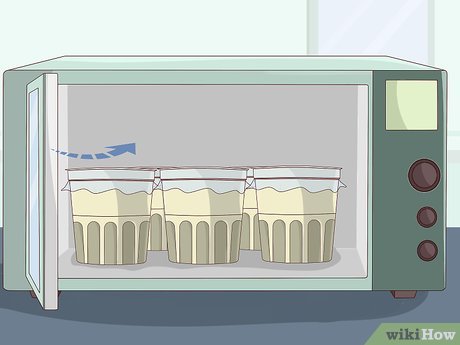
1Place the filled ramekins in the microwave. Depending on how large your microwave is, you may only be able to fit half of the ramekins in it. Take care not to spill any of the custard as you put them in.XEnsure the ramekins you’re using are microwave-safe.
2Microwave the watalappan for 5 minutes. Turn your microwave on to full power and cover the ramekins with plastic wrap. Then heat the watalappan for 5 minutes.X
Did You Know? The plastic wrap will trap the steam as the watalappan cooks. This will give the watalappan a spongy, soft texture.

3Heat the watalappan in 3 minute increments until they’re set. Since microwaves and ramekin sizes vary, you’ll need to check the watalappan to see if it’s set or still jiggly in the center. If it wiggles, microwave the watalappan in 3 minute increments until it’s finished cooking.X
4Remove and chill the watalappan. Use oven mitts to carefully remove the watalappan from the microwave. Set them on a wire rack until they’re cool enough to handle without the mitts. Then put them in the refrigerator to chill for 2 hours before serving.XRefrigerate the ramekins of watalappan for up to 5 days.








